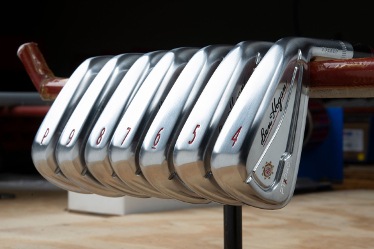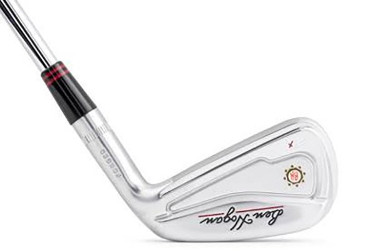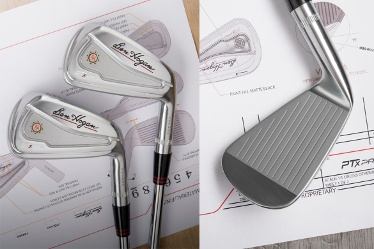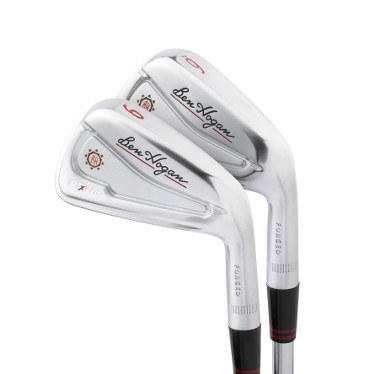
Ben Hogan can be described as a niche company, mostly dedicated to golf enthusiasts, and if you fall into the respective category, you’ll be pleased to learn about the new PTX Pro irons, which share the two-design “tech platform” of the original PTx gen, and they’re also built using composite materials for the best experience in golf money can buy.
Basically, the new generation builds on the success of the original product, making for an incremental upgrade of sorts, yet Ben Hogan seems to follow that philosophical concept about “if it ain’t broke, don’t fix it”, i.e. the new irons are very similar to the older ones, but they come updated with the latest technological bells and whistles in the company’s portfolio. But don’t worry, as most companies in the golf industry are doing the exact same thing, and the rest of the business is taken care of by their marketing departments. Rant aside, the dual construction/composite material used in the PTx Pro irons is aimed at preventing the iron’s CoG (center of gravity) from getting too low, and this is literally the thing that makes these babies rather unique.

It’s true that most golf gear manufacturers are trying to lower the center of gravity as much as possible, and they are doing this for years, but Ben Hogan took a different approach with their new PTx Pro. Here’s Scott White, Ben Hogan’s CEO and president “mansplaining” (just kidding) how the new generation is very similar to the original PTx in this regard, i.e. they keep their scoring irons’ center of gravity relatively higher compared to other brands, in order to produce a flatter:
“The CG of every other iron set on the market decreases (gets lower to the ground) as you move towards the pitching wedge.Loft is the biggest contributor to launch so you don’t need to double down and have a lower CG along with higher loft. The result of this is ballooning short irons and inconsistent distance control.”

However, it’s worth mentioning that Ben Hogan’s Research and Development department is not downplaying the benefits of having a low center of gravity on their scoring (longer) irons in the PTx Pro set. What they are trying to do is to achieve what the company describes as a more linear center of gravity through the set instead of dropping the CG as low as possible, which sounds rather cryptic, but it makes sense from an engineering point of view. The trick is to keep the height of each head’s center of mass relatively the same through the set, whether it’s a wedge or a 3-iron. Here’s Scott White again explaining how the new PTx Pro generation comes with an even higher center of gravity compared to the original PTx launched back in 2016:
“The most significant changes are in the shorter, scoring irons. The 8-iron through pitching wedge have a slightly higher CG to deliver a lower ball flight and help prevent ballooning. We received feedback from good players, including tour professionals and highly accomplished amateur players who were using the original PTx irons that the short irons had a higher trajectory than they wanted.”

How did they do it you asked? Well, the new Ben Hogan PTx Pro irons are very different construction-wise if you compare the short ones with the long/middle irons. The latter feature a hollow construction, with a high strength maraging face made of steel alloy (MS300 steel respectively). And if you’re wondering why Ben Hogan uses steel alloy instead of titanium, like other premium brands, everything’s part of the plan according to Scott White. The thing is, MS300 alloy is widely used in the aerospace industry, which means it’s good enough for golf gear, i.e. it allows Ben Hogan to, let me quote: “decrease the face thickness, increase the COR [coefficient of restitution or spring-like effect], and increase the durability.”
And, most probably steel alloy it’s cheaper than titanium, but that’s another story for another time. The PTx Pro irons boast a three piece design for the body, which uses forged carbon steel (1025); moreover, a tungsten weigh is also forged into the toe, in order to increase forgiveness, and as Mr. White told us, to “increase launch and spin per degree of launch” on the 4-iron through 7-iron, i.e. on the middle/long irons in the set. The short irons are built from co forged stainless steel, the same 1025 variety actually, and they also come with titanium-made cores of different sizes. This time, Ben Hogan used titanium instead of steel in their short irons in order to shift the center of gravity upwards, since titanium is lighter than steel and all that. All the irons in the new PTx Pro set arrive with milled grooves, in good Ben Hogan tradition, and also with the company’s patented and familiar V-Sole, which promotes better turf interaction, or so we’re told. Here’s Ben Hogan CEO and President again:
“The shaping is similar to PTx. PTx Pro was really designed to fit the eye of the most discerning, accomplished players. The face area, sole width, and offset have been increased slightly.”
And here comes the kicker: despite being a high end/premium product, the new PTx Pro irons are decently priced, being available online only at BenHoganGolf.com via the company’s now familiar direct to consumer marketing strategy, which allows them to sell a 7 price set for just $770; the 6 piece set costs $690, and there’s also a 5 piece set that can be yours for $600.





